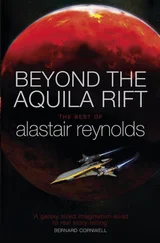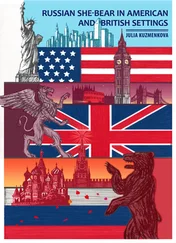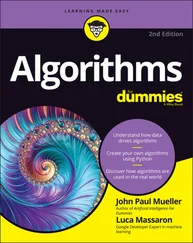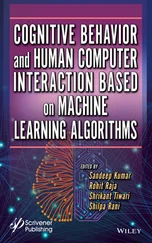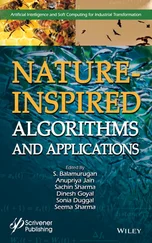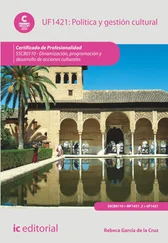1 Cover
2 Title Page Cultural Algorithms Tools to Model Complex Dynamic Social Systems Robert G. Reynolds Department of Computer Science College of Engineering Wayne State University Detroit, Michigan 48202 and Visiting Research Scientist Museum of Anthropological Archaeology University of MIchigan‐Ann Arbor Ann Arbor, MIchigan 48107‐1259
3 Copyright Page
4 List of Contributors
5 About the Companion Website
6 1 System Design Using Cultural Algorithms Introduction The Cultural Engine Outline of the Book: Cultural Learning in Dynamic Environments References Note
7 2 The Cultural Algorithm Toolkit System CAT Overview Downloading and Running CAT The Repast Simphony System Knowledge Sources Fitness Functions ConesWorld The Logistics Function CAT Sample Runs: ConesWorld CAT Sample Runs: Other Problems Reference Note
8 3 Social Learning in Cultural Algorithms with Auctions Introduction Cultural Algorithms Subcultured Multi‐Layered, Deep Heterogeneous Networks Auction Mechanisms The Cultural Engine ConesWorld Experimental Framework Results Conclusions References Note
9 4 Using Common Value Auction in Cultural Algorithm to Enhance Robustness and Resilience of Social Knowledge Distribution Systems Cultural Algorithms Common Value Auction ConesWorld Dynamic Experimental Framework Results Conclusions and Future Work References Note
10 5 Optimizing AI Pipelines Introduction Overview of Cultural Algorithms CA Knowledge Distribution Mechanisms Primer on Game Theory Game‐Theoretic Knowledge Distribution Continuous‐Action Iterated Prisoner's Dilemma Test Results: Benchmark Problem Test Results: Computer Vision Pipeline Conclusions References Note
11 6 Cultural Algorithms for Social Network Analysis Introduction Application of Social Network Forming Successful Teams Formulating TFP Communication Cost Personnel Cost Distance Cost Workload Balance Why Artificial Intelligence? Cultural Algorithms Forming Teams in Coauthorship Network Individual Representation Fitness Function Belief Space Dataset and Observations Skill Frequency Forming Teams in Health‐care Network Individual Representation Fitness Function Dataset and Observation Summary and Conclusion References Notes
12 7 Evolving Emergent Team Strategies in Robotic Soccer using Enhanced Cultural Algorithms Introduction Related Work The 2D Soccer Simulation Test Bed Evolution of Team Strategies via Cultural Algorithm Experiments and Analysis of Results Conclusion References
13 8 The Use of Cultural Algorithms to Learn the Impact of Climate on Local Fishing Behavior in Cerro Azul, Peru Introduction An Overview of the Cerro Azul Fishing Dataset Data Mining at the Macro, Meso, and Micro Levels Cultural Algorithms and Multiobjective Optimization The Artisanal Fishing Model The Experimental Results Statistical Validation Conclusions and Future Work References Note
14 9 CAPSO: A Parallelized Multiobjective Cultural Algorithm Particle Swarm Optimizer Introduction Multiobjective Optimization Cultural Algorithms CAPSO Knowledge Structures Tracking Knowledge Source Progress (Other than Topographic) CAPSO Algorithm Pseudocode Multiple Runs Comparison of Benchmark Problems Overall Summary of Results Other Applications References Note
15 10 Exploring Virtual Worlds with Cultural Algorithms Archaeological Challenges Generalized Framework The Land Bridge Hypothesis Origin and Form Putting Data to Work Pathfinding and Planning Identifying Good Locations: The Hotspot Finder Cultural Algorithms Cultural Algorithm Mechanisms The Composition of the Belief Space Future Work Path Planning Strategy Local Tactics Detailed Locational Information Extending the CA Human Presence in the Virtual World Increasing the Complexity Updated Path‐Planning Results in Unity The Fully Rendered Land Bridge Pathfinder Mechanisms Results Conclusions References Note
16 Index
17 End User License Agreement
1 Chapter 3Table 3.1 Performance comparison for A = 1.01.Table 3.2 Performance comparison for A = 2.0.Table 3.3 Performance comparison for A = 3.3.Table 3.4 Performance comparison for A = 3.35.Table 3.5 Performance comparison for A = 3.4.Table 3.6 Performance comparison for A = 3.5.Table 3.7 Performance comparison for A = 3.99.
2 Chapter 4Table 4.1 Experimental framework parameters.Table 4.2 Comparing CAT4 and CAT2 regression through different A ‐value complex...
3 Chapter 5Table 5.1 Example of KS association structure for an individual in Game‐based...Table 5.2 Component terms of Degree of Cooperation score.Table 5.3 Mean generations to solution: CATGAME versus WTD Majority.Table 5.4 CATGAME versus WTD on Computer Vision Problem.
4 Chapter 6Table 6.1 The result of the various ratio of patient to care provider and wha...
5 Chapter 7Table 7.1 Performance of the algorithm against all other teams.Table 7.2 Sample encoding for an arbitrary individual.
6 Chapter 8Table 8.1 Data dictionary for the Peru database.Table 8.2 Details about the Decision Tree of the sample run in Figure 8.5.Table 8.3 Critical value for F ‐test at different significant levels of alpha....Table 8.4 Statistical value for ( F ‐statistic) for Phase I, II, and III.
7 Chapter 9Table 9.1 Experimental results.
8 Chapter 10Table 10.1 Table of an A* Alpena‐to‐Amberley CA Optimized Migration (part 1).Table 10.2 Table of an A* Alpena‐to‐Amberley CA Optimized Migration (part 2).Table 10.3 Table of an A*mbush Alpena‐to‐Amberley CA Optimized Migration (par...Table 10.4 Table of an A*mbush Alpena‐to‐Amberley CA Optimized Migration (par...
1 Chapter 1 Figure 1.1 Cultural Algorithm framework. Figure 1.2 An example of Maxwell's demon in action. The demon selectively le...
2 Chapter 2 Figure 2.1 A sample of the CAT System displaying a visualization of the Cone... Figure 2.2 The CAT system's user interface panel. Figure 2.3 The fitness of ConesWorld visualized, with the height at any give... Figure 2.4 A small ConesWorld topography update of position only. Figure 2.5 The Knowledge Source fitness of a ConesWorld simulation undergoin... Figure 2.6 ConesWorld KS Fitness with a regular topographical update at ever... Figure 2.7 The CAT System Logistics Function. Figure 2.8 A three‐dimensional visualization of successive iterations of the... Figure 2.9 The initialization stage of the static (above) and dynamic (below... Figure 2.10 Five steps of the static (left) and dynamic (right) landscape ne... Figure 2.11 The homogeneous topologies. (a) Ring topology, (b) square topolo... Figure 2.12 Five steps of the static (left) and dynamic (right) bounding box... Figure 2.13 The KS fitnesses for the static (above) and dynamic (below) land... Figure 2.14 The span of each Knowledge Source's bounding boxes. Figure 2.15 The tension spring [1]. Figure 2.16 The Knowledge Source fitnesses of the tension spring problem.
3 Chapter 3 Figure 3.1 The cultural algorithm framework. Figure 3.2 Spectrum of knowledge distribution mechanisms. Figure 3.3 Cultural algorithm pseudocode. Figure 3.4 Updating the five knowledge source categories. Figure 3.5 The social fabric influence function: each of the knowledge sourc... Figure 3.6 Subcultured wheel selection process. Figure 3.7 Auction process phase 1: constructing the bidding wheels. Figure 3.8 Auction process phase 2: selecting KS for participation.Figure 3.9 Auction process phase 3: conducting the auction.Figure 3.10 Auction process phase 4: assigning influence.Figure 3.11 The cultural engine.Figure 3.12 An example landscape in two‐dimensional space ( n = 2) bound by x Figure 3.13 Logistic function with characteristic A values.
Читать дальше

